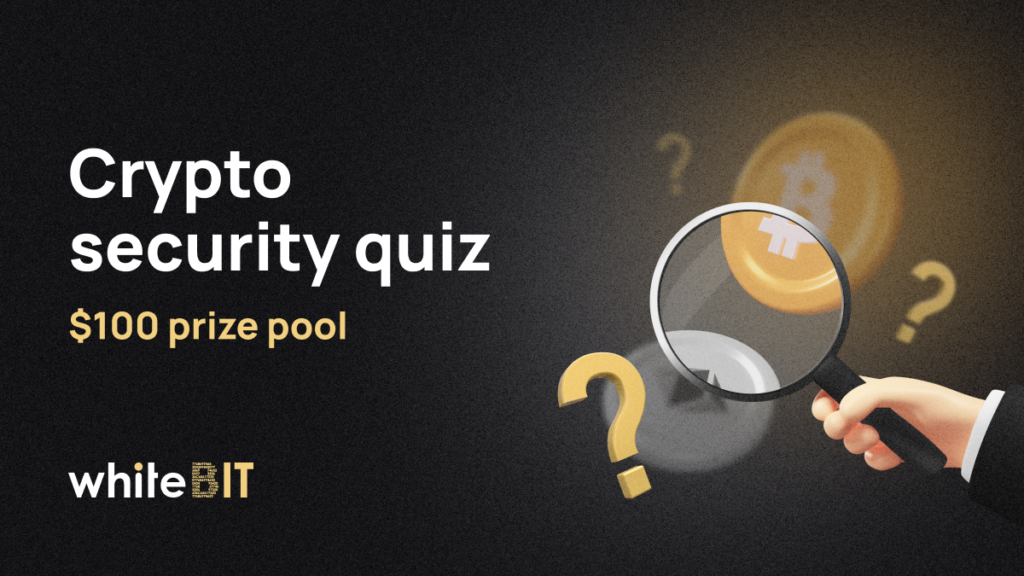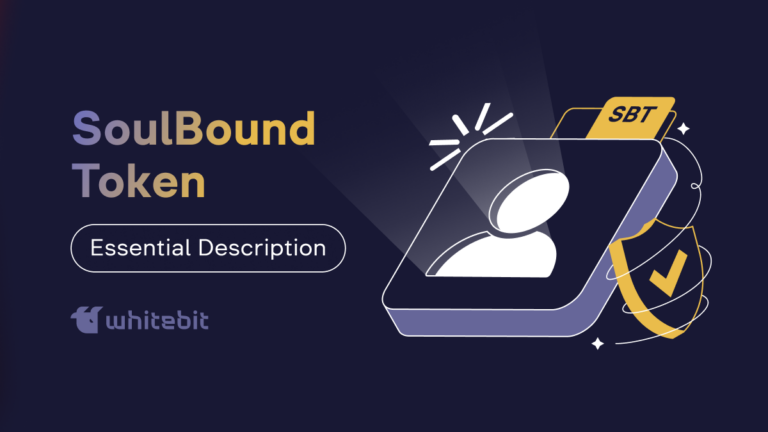Crypto Security: Protect Yourself in the Digital Space

Content
The most vital parts of our lives are slowly but surely becoming digital. It is convenient and reliable, but online life needs as much protection as life offline. The purpose of cybersecurity is to protect users’ data and computer systems. Internet fraudsters have invented many ways to obtain the necessary information, but experts on the digital front are able to find a way out. This guide will analyze the main types of Internet fraud in the crypto field and provide the principles of effective protection against it.
Types of fraud
Fake cryptocurrency exchanges
Before starting to explore virtual assets, every beginner will first visit a few Google pages in search of a suitable exchange. Already at this stage, one needs to be as careful as possible not to fall into the trap of fake (scam) platforms. Fake exchange sites often copy the design of well-known platforms to bribe the trust of novice users. Extremely low fees and promises of generous gifts for registration are an alarming signal. In addition, the address of the exchange’s website should look clean, without unnecessary symbols or letters. Our example is whitebit.com.
Gifts in exchange for a contribution
If you come across a bright announcement that you can win a guaranteed prize for a small deposit, you should run away. Of course, well-known exchanges often hold giveaways, where certain conditions must be met for a user to participate. But sending your money is not on the list. Such fraudulent announcements can be found somewhere in the comments, in suspicious messages in a messenger, or the mail. If a well-known exchange holds a giveaway, it will announce it on its official website and social media.
Phishing
Phishing is a type of online fraud that targets confidential information of the user (logins and passwords from financial accounts). If talking about cryptocurrency, it is a private key. With access to login information, scammers usually withdraw victims’ money to their own accounts very quickly and simply disappear. There are several types of phishing:
- Vishing (voice phishing) is a type of voice fraud. For example, you may receive a call from a financial institution’s security service that informs you about a suspicious activity detected on your account. During the conversation, the necessary information is fished out from the person.
- Smishing (SMS phishing) is a type of SMS fraud. The text of such messages often contains a notification about the blocked account, assets’ theft, or an attempt to hack the account.
- E-mail phishing is the most common form of identity theft. In this case, the user receives an e-mail letter that informs about manipulations and problems with the account or offers to take a test for some reward.
- Search engine and social media phishing. It means placing a fake website in search results, and in social media, it involves sending private messages on behalf of an “official” account or tagging you in posts.
Ponzi schemes and pyramids
Ponzi schemes and various pyramids are the classics of Internet fraud. An example of a Ponzi scheme is an investment strategy in which early investors are paid with the funds collected from new entrants. When a fraudulent project decides to go into hiding at some point, their social networks stop working, the website gets deleted, and investors lose their investments.
The pyramid, in turn, provides profit to those participants who attract more new people. As a result, the pyramid participants cease receiving money when the pyramid developer decides so.
Ways to protect your data and cryptocurrency
First, choose reliable crypto platforms that will provide you with all the necessary security services. Then it is your turn: you can either neglect the recommendations and services of the exchange or meet the minimum requirements and stay safe.
Here is a list of exchange services that help users take control of their data:
- AML-checks
- Anti-phishing
- 2FA (two-factor authentication)
- KYC verification
AML
Anti-money laundering is a set of measures and laws aimed at preventing illegal activities in the financial sector in general and money laundering in particular. AML verification, in turn, is a way to check the address with which you plan to interact for its connection with “dirty” cryptocurrency. The main goal of AML and KYC is to protect users first and foremost. The presence of these tools on the platform suggests that the exchange cares about the security of its users and its own reputation. If you have chosen a platform without KYC and AML, you should be aware that such an exchange will not be responsible for your assets and personal information.
An AML check will help you protect your data and assets. What are the prerequisites for a successful cryptocurrency verification? Let’s take a look at Bitcoin as an example.
- You cannot delete any information from the blockchain.
- Everyone can track the information about the transaction thanks to the unique transaction address.
- Bitcoin is made up of smaller parts, and its history can also be traced.
As you know, a blockchain remembers everything. All this information is recorded in private and public databases, which are checked by the algorithm. The algorithm “marks” the address with the following tags:
- darknet service;
- gambling;
- illegal service;
- risky exchange;
- scam, and so on.
Even if an individual uses different addresses, the algorithm assigns tags and starts tracking all associated addresses and operations.
WhiteBIT allows you to check any address of your interest in a few seconds 👇
- Select the AML tab in the Services section in the upper menu of the exchange.
- Choose the currency you want to check.
- Enter the address and click “Check”.
Ready! The algorithm is already checking the address you are interested in. Pay attention to the risk signals and the risk score. They will show you the tags to watch out for, as well as the risk percentage.
Anti-phishing
Anti-phishing is a feature that protects users from e-mail fraud. It can be used to make sure that the e-mail came from us.
How to enable Anti-Phishing on our exchange?
- Log into your account.
- Go to the Security tab.
- Find the Anti-phishing section.
- Click the Enable button and enter the code you made up.
- Click “Save”.
After you save this code, every time you receive an email of a technical nature from WhiteBIT, it will contain this code (this does not apply to promotional emails).
Thus, you can check whether the letter is authentic by checking the code.
Remember:
- letters of a technical nature (withdrawal of cryptocurrency and replenishment of the balance, WhiteBIT Codes, password change) come from the whitebit.com domain;
- promotional emails (educational content, new listings) are sent from the whitebit.promo domain.
2FA
Two-factor authentication is the identity verification necessary to gain access to your account. It provides an additional layer of account protection. When using 2FA on top of the password, you need to either enter a code received via SMS or app, turn on voice recognition, or scan your fingerprint. Enabling this feature makes it very difficult for unauthorized individuals to log into your account. Moreover, you will get notified if someone tries to do so. The 2FA code can be used just once. It remains valid for only a couple of minutes or hours. Thus, each time you log into the account, you will receive a new digital combination.
Here are the most common types of 2FA:
- authentication via SMS, call, or e-mail;
- authentication via software like Google Authenticator or Microsoft Authenticator;
- biometric authentication (the user’s face, voice, retina, or fingerprint becomes an additional code for logging into the account).
We recommend enabling the 2FA login feature on WhiteBIT. It is pretty easy to do ⬇️
- Download and install the Google Authenticator app on your mobile device.
- Log into your account. To do this, click the Account icon and select “Account Settings” and “Security”.
- In the Security tab, you will see the Two-factor authentication section and a QR code. Scan the code using the downloaded app, or enter it manually.
- Add the WhiteBIT tab to the app and enter the authentication code in the Please Enter Key field.
Done, you have activated two-factor authentication!
KYC
We have already talked about AML – the measures and laws to combat illegal financial activity in the field of cryptocurrencies. KYC verification is part of AML and ensures clarity and transparency in the sphere of cryptocurrencies. This is the process of verifying a user’s identity through their personal information, such as a photo of an ID card.
KYC has many benefits for both users and the exchange itself. When it comes to security, KYC helps regulate the environment for the safe conduct of financial transactions.
The KYC verification takes a few minutes. You need to open the Security tab in your Account section, find the Verification field and follow the instructions explained there in detail.
A few words for the finale
Choosing a proven exchange undoubtedly influences the level of security of your assets. However, your awareness and personal responsibility are the main protectors of your assets, personal data, and restful sleep.
Follow the basic rules and stay safe!








